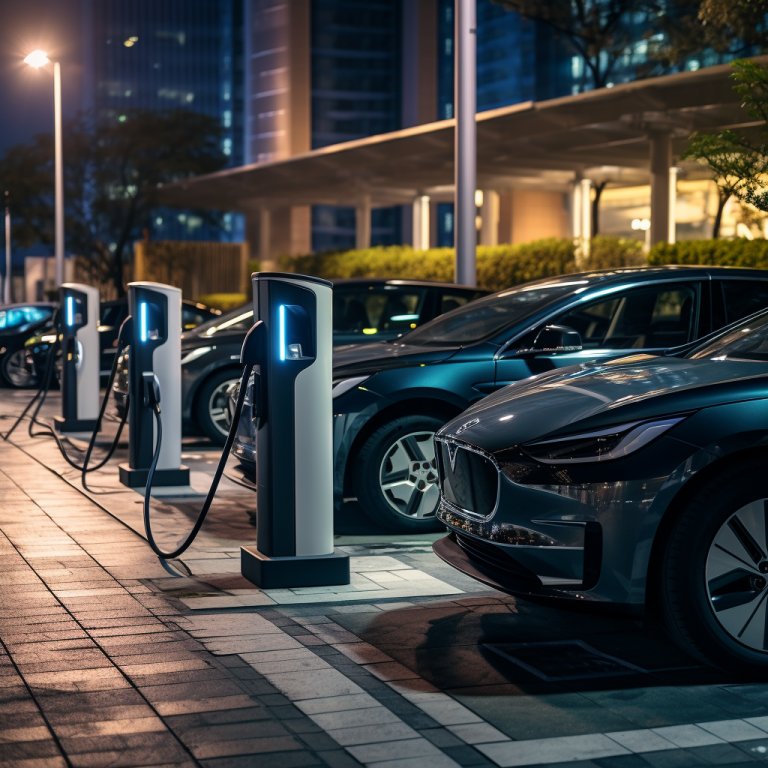
Power electronic converters in electric vehicle (EV) chargers inevitably generate signals with harmonic distortion. This article explores the origins of harmonic distortion in such signals, analyzes their impact on EV power cables, and details key design considerations to mitigate these effects.
Understanding harmonic distortion in EV chargers
Power electronic converters are a crucial element of EV chargers. While most power grids deliver energy as alternating current (AC), EV batteries primarily store energy in direct current (DC) form.
Although some advanced fast-charging EV stations directly supply DC, converting grid AC power for EV battery storage remains the norm.
During this process, the rapid switching actions of the converter create non-sinusoidal currents that cause harmonic distortion. As multiples of the base frequency,
these harmonics can disrupt the normal functioning of electrical components within EV chargers.

Unchecked harmonic distortion damages EV power cables, leading to excessive heating from power losses, voltage distortion, and increased electromagnetic emissions that interfere with nearby devices. Continuous exposure to these harmonics weakens and deteriorates insulation, reducing the cable’s lifespan.
Moreover, harmonic distortion increases electromagnetic interference (EMI) and can potentially affect electronic vehicle components. Additionally, harmonic distortion interacts with an EV power cable’s inductive and capacitive properties, causing voltage fluctuations that diminish charging efficiency. Specifically,
these distortions amplify adverse effects by resonating with the cable’s inherent frequencies.
Of course, not all power cables are the same. The choice of conductive material, insulation type, and even a cable’s physical design determines its susceptibility to harmonic distortion. Power cables with thicker insulation may resist heat more effectively, yet this might also increase vulnerability to capacitive effects and alter their interaction with harmonics. Beyond EV power cables:
The broader implications of harmonic distortion in EV chargers In addition to impacting EV power cables, harmonic distortion in EV chargers can lead to overheating of transformers and neutral wires, potentially activating circuit breakers due to elevated current. This distortion might also degrade overall power quality (PQ), leading to harmonic-related power losses. Moreover,
the presence of harmonic distortions can shorten the lifespan of electrical components, increasing maintenance costs and heightening the risk of system failures. Charging multiple EVs simultaneously increases harmonic distortion, potentially pushing EV charger components beyond their operational limits.
Although IEEE standards recommend a total harmonic distortion (THD) below 5%, some EV chargers register THD levels up to 11.6%.

Figure 2. Multiple EVs connect and draw power at EV charging stations. (Image: EV Engineering)
Implications for EV drivers
Harmonic distortion poses significant challenges for EV chargers. They introduce non-linearities that compromise the efficient use of power from the grid, resulting in suboptimal charging performance. Over time, the persistent presence of these distortions leads to wear and tear, making frequent power cable replacements and repairs inevitable.
Beyond immediate physical wear, EMI-induced disruptions — a direct consequence of harmonic distortion — jeopardize vehicle system stability. Such disruptions might cause unpredictable vehicle behaviors, including erratic dashboard displays, unintended acceleration or braking, and false alarm activations. Additionally, they can lead to malfunctioning infotainment systems, faulty door locks, loss of communication with key FOBs, and impaired GPS and navigation systems.
Mitigation measures for EV chargers
Mitigating the effects of harmonic distortion on EV power cables requires a comprehensive design approach. While setting clear power factor limits for EV chargers enhances overall efficiency, it's also crucial to directly address harmonic content. Specifically, incorporating active inter-harmonic detection into EV charger specifications effectively manages and reduces the impact of harmonic distortion.
Additional design considerations and key mitigation measures include:
PFC circuits: These ensure current waveforms align closely with voltage waveforms, improving power quality and delivering safe and efficient EV charging. Using harmonic and reactive power compensation devices is essential for EV chargers lacking PFC circuits.
Summary
Power electronic converters in EV chargers produce signals with harmonic distortion. Rooted in a converter’s switching function, this harmonic distortion impacts charging efficiency, EV power cables, and system lifespans. Fortunately, EV charger manufacturers can proactively address and minimize the detrimental impacts of harmonic distortion with a comprehensive design approach.